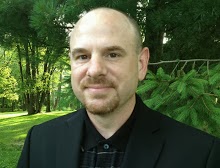Schools need mechanism to capture what is obvious and what is obscure to be safe
Another name added to the list
John David LaDue of Waseca, Minnesota was recently added to the list of infamous names associated with school massacres. Fortunately, LaDue did not kill anyone and did not even fire a shot but alas was charged with attempted murder in the first degree. And had it not been for the watchful eye of a suspicious adult, the teen likely would have progressed a lot further in his detailed plot to
commit horrible crimes.
Mixed Traits – Mixed Signals
Several accounts cited information about LaDue that suggested
he fit the profile of someone who may be at risk for destructive behavior. Those attributes includes an affinity for guns, a fan of violent movies and authors of dark subjects. He was also routinely seen practicing hatchet throwing at a tree in his front yard. But on the flip side, this 17 year old was a high school honor student, held a job, had friends and was allegedly close with his older sister.
Suspect memorialized his intentions
 |
| http://www.startribune.com/ |
Facts obtained from the police investigation revealed a very dark and dangerous person who appeared to be intent on pulling off another Columbine style attack. He had guns and bombs in his room and more bombs and materiel in a storage facility. Most damming was a 180 page diary that not only detailed his intentions which included killing his family and creating a fire as a diversion but also showed an affinity for the Columbine killers and even planned to strike on the same date (April 20th) as they did.
Did the adults miss the signals?
LaDue’s father who was
interviewed in a local paper indicated he was dumbstruck by his son’s dark side. He was very open about his parenting of his son and by his account, acted reasonably in his upbringing. LaDue was a good student and did not get into trouble which led the elder LaDue to provide his son with some latitude. He did claim to check his internet browsing but stopped short of searching his room. That being said, the school superintendent indicated that LaDue was not unknown to them and that people made lots of contact with him and they tried everything possible to build relationships with him. This is sort of a cryptic comment and the context in which it was said was not exactly known but it does raise the specter that LaDue was known to administrators for nefarious reasons.
The Missing Piece
But for some
incredible luck and a citizen willing to make the effort to report suspicious behavior, the ending of this story may have been tragically different. Clearly, luck is not going to win the day all the time. There needs to be something beyond metal detectors and locked doors for real school security to be comprehensive. A critical piece of the solution may lie in the creation of well trained Threat Assessment teams.
A serious commitment to safety and security
A Threat Assessment team is designed to be that place where intelligence is gathered, plans are formulated and actions are initiated. All of its efforts are designed to intercept violent actors and prevent them from carrying out plans of destruction and mayhem before they happen. They are also there for providing the help that students and families need to overcome these tendencies. Threat Assessment teams are different from Student Assistance Programs but share a similar structure in that they require a school district to buy into the concept, make teachers and staff available to participate, allow time for training and meetings and to ensure that they are a visible and active part of school functioning.
Not an impossible mission
A very big lesson learned from tragedies in the past was that there was a connectivity gap between adults, both at home and at the school, and their students. The creation of an inclusive environment is a necessary element for safe schools and establishing connections is a critical component of that concept. In addition to the ability to investigate and formulate action plans, the Threat Assessment team would need to ensure the link between adults and students so that signals and threats are captured, quantified and acted upon.

